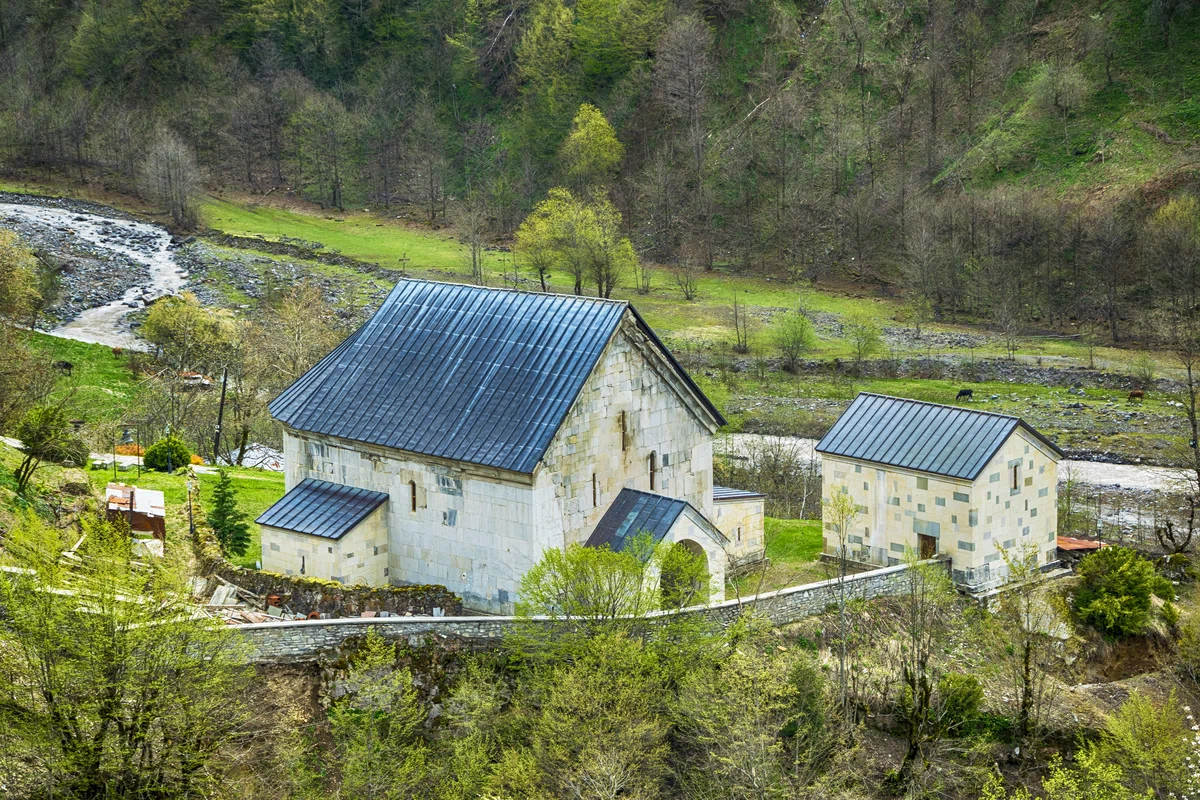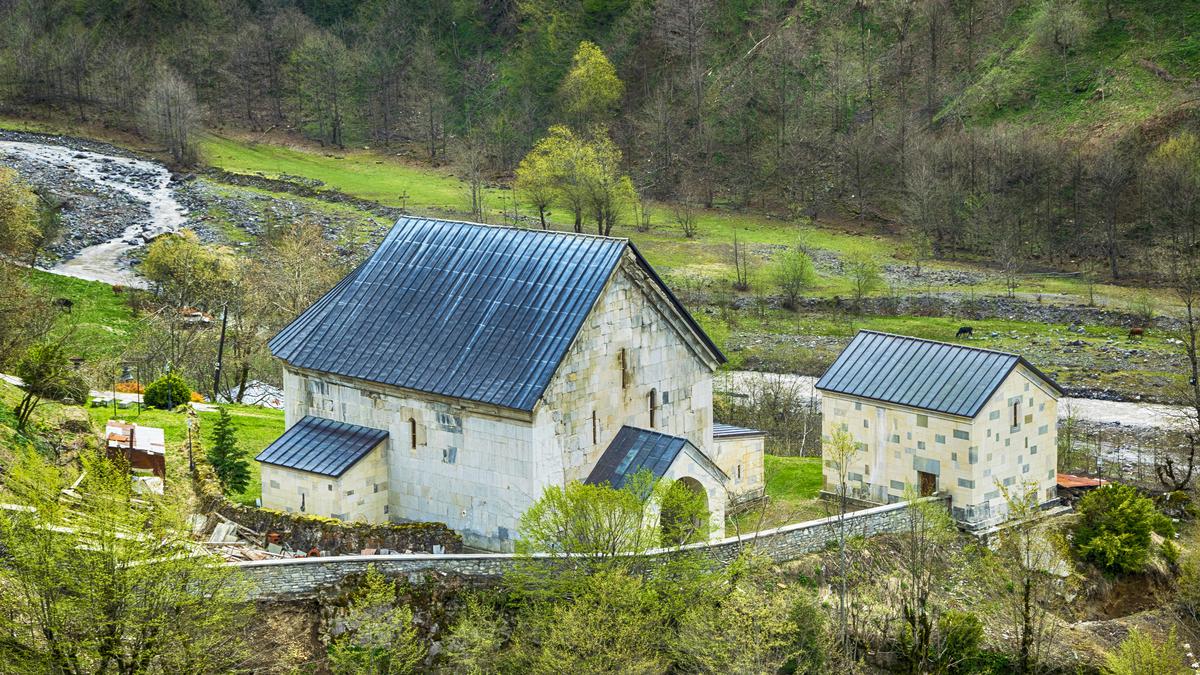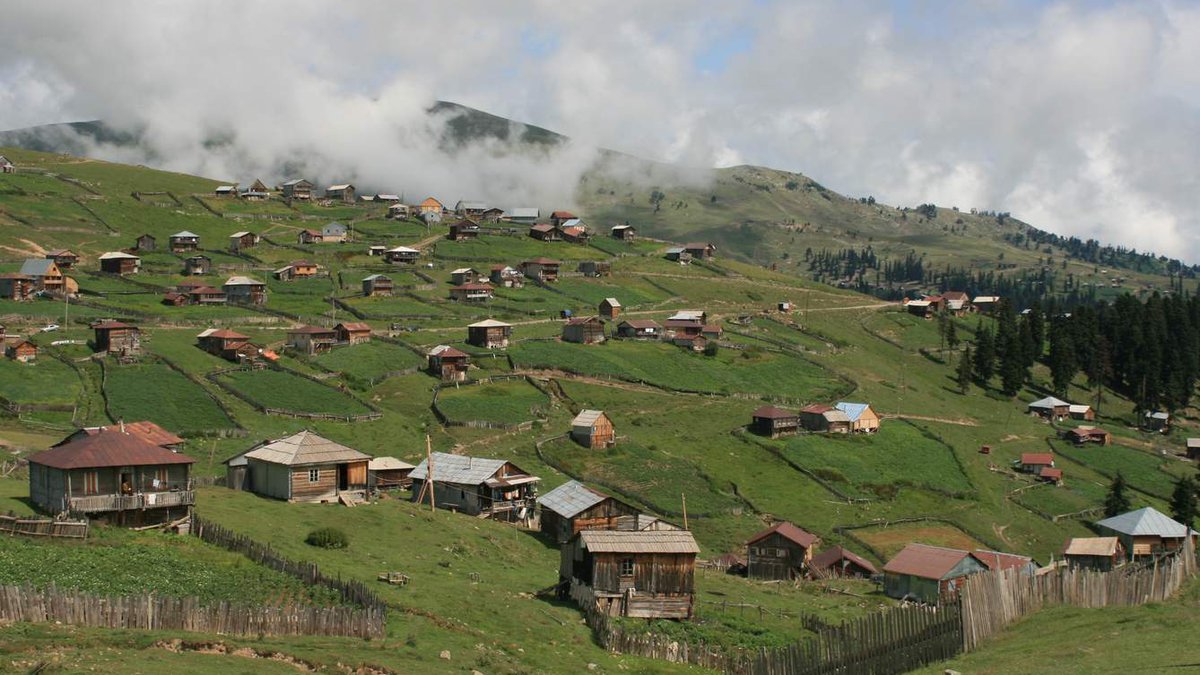
Ancient sights of Georgia church in Skhalt 13th century. The Shalt monastery in Adjara.
The Shalt monastery in Adazharia, in the village of Kinchauri, is from the list of the most popular sights of Georgia. The ancient building is located in one of the most beautiful places in Georgia...
Visit the Shalt Monastery in Adjara⬇️
Territory of Adjara it was raided by unfriendly neighbors quite often. The church in Skhalt can be considered unique for the reason that it is the only religious building that managed to survive the raids and the time of the Ottomans, as well as the Soviet period and reopen its doors to parishioners in 1990.
The monastery in Skhalt is a building in the Byzantine style - the time of construction, about the middle of the 13th century. Here, as in the case of the fortress of Hihani, there are discrepancies regarding the initiators of the construction. According to the documentary version, the Shalt church was built by order of the Princes Abuseridze.
The legendary version attributes the initiative of building the building to Queen Tamara. Whatever it may be, the church has a rich history, and at the moment it is the residence of the Georgian Orthodox bishop of Shalt. It should be noted that, upon acquaintance with her, the church can cause a twofold impression. Inside it looks big and spacious.
At the same time, when viewed from the outside, it may seem neat and small. Perhaps such impressions are due to the fact that the building of the Shalt monastery is located in a mountainous area. Whatever it was, the church in Skhalt relatively successfully survived the time of the Ottoman conquests in the 16th century - it was simply "forgotten" and it turned out to be abandoned. In 1874, it was accidentally discovered by Georgy Kazbegi, who was with a reconnaissance mission in Georgia.
Thus, the church was remembered again, and now in 1878, after Adjara became part of the Russian Empire, the Georgian historian Dmitry Bakradze and the archaeologist-ethnographer Countia Praskovya Uvarova visited the church in Skhalt.
Architectural features
In terms of architecture, the church in Skhalt is not marked by anything unusual. A seven-sided apse, a pair of main southern portals and a northern entrance. The material that was used for the construction is white-gray stone. The construction process also has its own creepy legend, which will be discussed below.
The inner lining is white stone. Previously, the walls were painted in the form of frescoes, some of which were discovered by researchers in 1997. The frescoes are an example of Byzantine painting dating back to the period of 14-15 centuries.
Legends and myths of the Shalt Monastery
According to the first legend, which refers to the period of the monastery's construction, a very competent mathematician, a master of his craft, was in charge of the construction. Before the start of construction, he calculated everything up to, one might say, a brick. The necessary amount of stones was harvested, cut and delivered to a high mountain. However, at the end of the construction, it turned out that one or more stones were missing.
This fact hurt the self-esteem of the master, and he preferred death to shame. The second legend is connected with Queen Tamara and underground ways, one of which allegedly connected the church and the Khikhan fortress. During the siege of the fortress, Queen Tamara went underground to pray in the church.

How to get to the monastery in Skhalt?
It is worth noting that when traveling to the Shalt Church, it may take a little more time than you plan in advance - along the way you will come across other sights of Georgia that are worth a look. As for the church itself, it is located in the village of Kinchauri, 80 km from Batumi, Khulo municipality.
The beauty of the winding mountain road that will lead us to the monastery is best observed from the window of a car driven by a local who is used to such roads. The Mahuntseti Waterfall and the Queen Tamara Bridge - the very sights of Georgia, which were discussed above - will meet on your way and their inspection may take much longer than you planned.
When you get to Zamleti - this is about 70 km from Batumi, you will turn right and follow the river Skhaltistskali for about 10 km. The local road leaves much to be desired, but in the end we will end up in Kinchauri.













32 comments
Log in to leave a comment